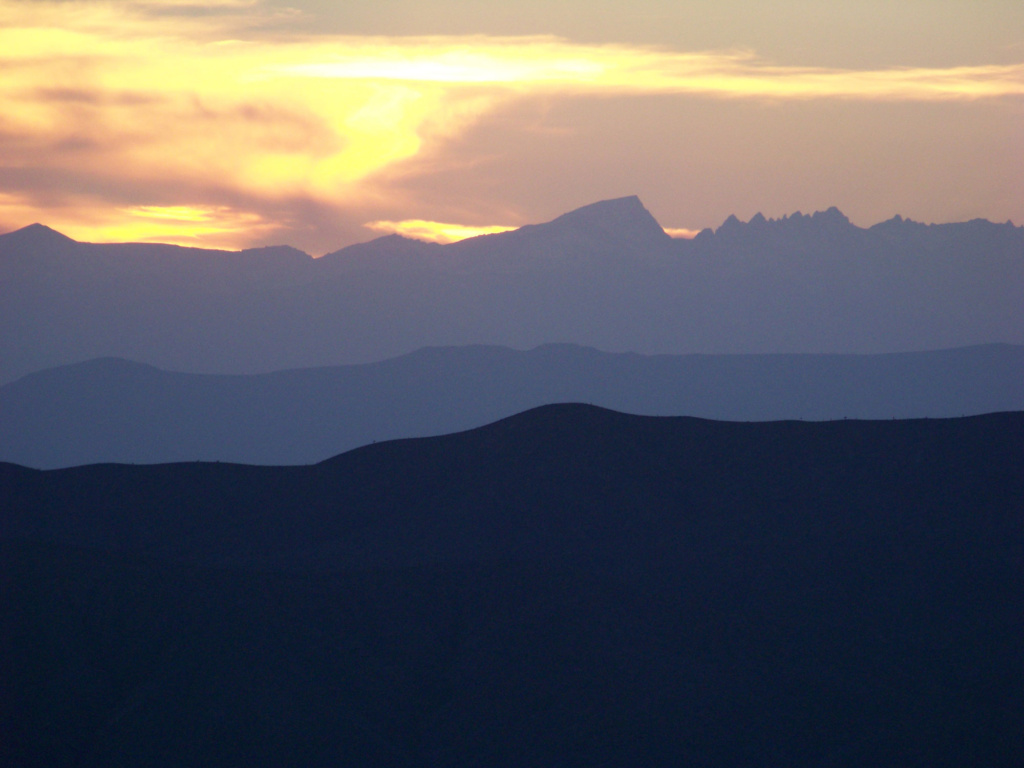our shortlist of important tips to know before off-roading in Death Valley
- If you are traveling back roads using 4-wheel drive, be sure to carry TWO spare tires. Expect to have a flat tire when exploring 4×4 roads in canyons with old mining equipment and debris. Having a 2nd spare ensures that you can get out of the backcountry. There is no towing service nearby and it is quite expensive. Joining an off-road recovery group is a great way to learn skills and have people you can call to recover your vehicle. Here is a post about our own recovery experience to learn more about these great groups of outdoor adventure-loving good Samaritans.
- There is NO cell phone service in most of Death Valley. Payphones are available at Stove Pipe Wells and Furnace Creek. 2-way radios work well in most places and help when you are separated to stay connected with each other.
- Don’t rely on Google maps or online maps that rely on cell or WiFi reception – bring a real-life map. Our favorite maps are Death Valley National Park Recreation Map by Tom Harrison and Death Valley National Park
by National Geographic Trails Illustrated Maps.
- Weather – our favorite time to camp is from November through April. Be prepared for snow, high winds, and temperature extremes. The beauty of camping in Death Valley is that if you are too hot, simply drive to a higher elevation – or too cold, drive to a lower elevation. Death Valley boasts to have the most difference in elevation in the U.S.; Telescope peak is at 11,049 and Bad Water is 282 ft. below sea level!
- Bring a well-equipped 1st aid kit. There are no medical services nearby. The nearest hospitals are in Ridgecrest CA, Pahrump NV and Bishop CA – all nearly 100 miles from the Park.
- Places to restock or get a hot meal are few and far between. There are 6 main “settlements” in the Death Valley area to find limited groceries, ice and gasoline. We have enjoyed taking a break at these places: Panamint Springs Resort, Stovepipe Wells, Furnace Creek, Shoshone, Beatty and Amargosa .
- Roads are constantly changed by the harsh environment. Guide books and maps cannot stay current so be prepared for rockslides and changes to your route.
- It’s a good idea to travel with another driver that is capable of driving a 4×4 to drive out of where you drive in. I don’t do much of the driving but “practice” on the back roads so I know what to do if I must.
- File a “flight plan.” This is pilot jargon to make an itinerary and let someone know when and where you plan to travel and explore in case a search rescue is needed. Get our easy template for sharing your itinerary with friends and family here.
- WATER! This seems obvious but don’t underestimate carrying plenty of water. At least 1 gallon per person per day for drinking and minimal washing. Don’t forget that your vehicle may need water too.
“The difference between an adventure or an ordeal is attitude.” – Bob Bitchin
More good Resources
- Read this information packed guide to exploring Death Valley from finding wildflowers to where to find camping. This online guide offers helpful details, so you don’t miss seeing many of the interesting venues Death Valley National Park has to offer.
- Here is a great link with more detailed info from the National Park Service for safe travel and exploring tips while visiting Death Valley.
- Never been to Death Valley and wonder where to start your visit? Check out the Death Valley Bucket List put together by the readers of Truck Camper Magazine (including yours truly).


[…] by May. To see the best blooming time there we like to visit in March and April. Check out my handy list to prepare for visiting Death […]